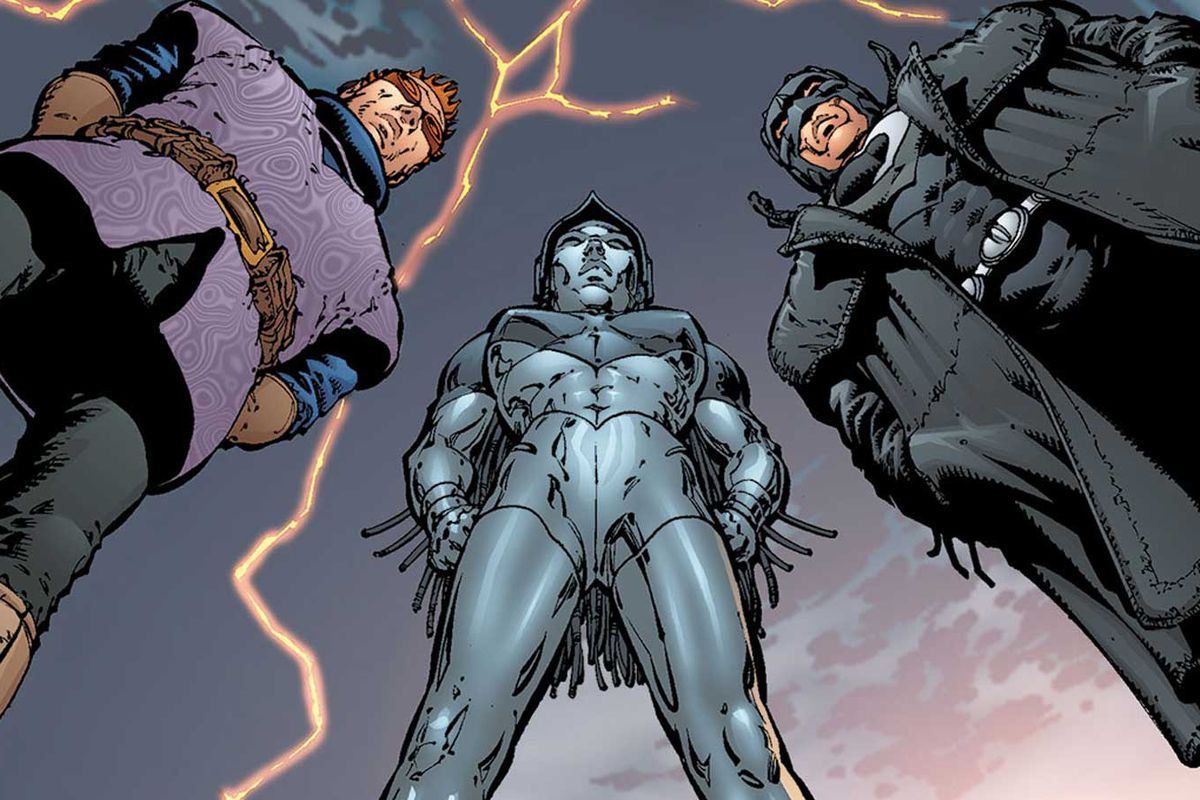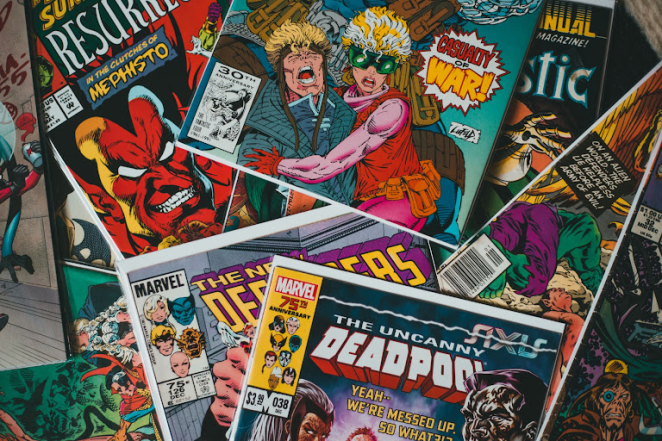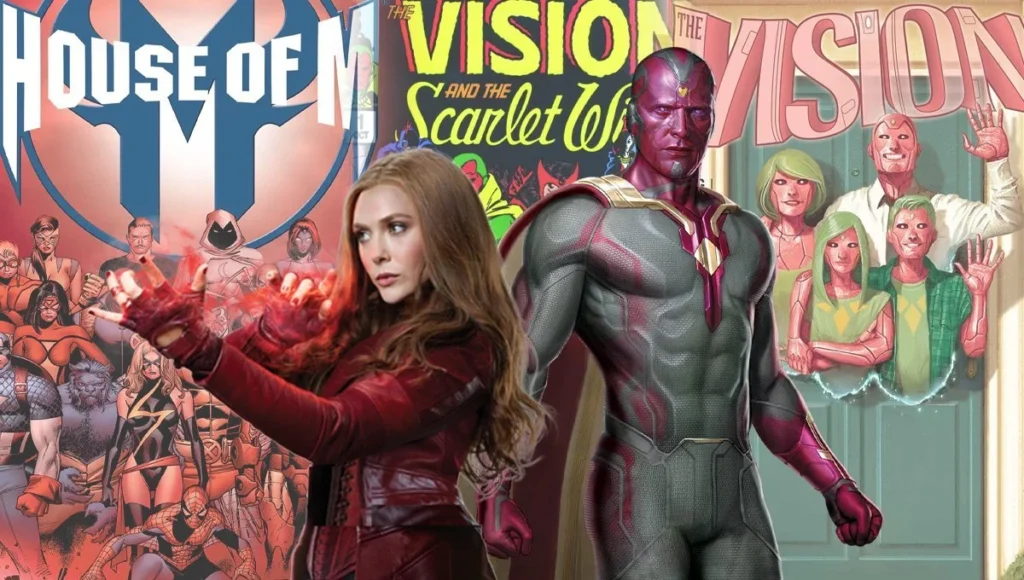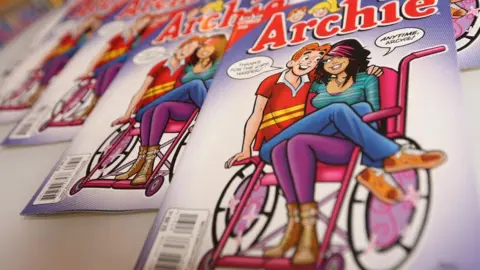
Comics have long been revered as a unique form of storytelling, captivating audiences with their vivid illustrations and compelling narratives. In recent decades, the influence of comics has expanded beyond the pages of graphic novels and comic books, permeating the realms of film and television. This evolution has reshaped the landscape of visual entertainment, blurring the lines between mediums and offering new avenues for creative expression.
The Transition: Embracing Visual Narratives

The transition from panels to screens signifies more than just a shift in the medium; it represents a convergence of artistic visions and storytelling techniques. With advancements in technology and visual effects, filmmakers and television creators have been able to translate the dynamic visuals and intricate plots of comic books onto the screen with unprecedented fidelity. This seamless transition has allowed audiences to experience their favorite comic book characters and storylines in a new and immersive way.
One of the key aspects driving this transition is the inherent visual nature of comics. Unlike traditional literature, which relies primarily on text to convey its message, comics employ a combination of words and images to tell a story. This visual language lends itself naturally to the cinematic medium, where storytelling is often conveyed through visual cues and mise-en-scène. As a result, filmmakers have been able to draw inspiration from the panel layouts, framing techniques, and visual motifs found in comics to craft visually stunning and narratively rich cinematic experiences. An internet service provider that manages IT services in San Antonio provides its users with excellent internet with which they can easily find and enjoy adaptations of their favorite comic books.
Furthermore, the episodic nature of comic book storytelling mirrors the structure of television series, making comics a fertile source of inspiration for television creators. Serialized storytelling, character development arcs, and interconnected narratives are all hallmarks of both comics and television, allowing for seamless adaptations that resonate with audiences across different mediums. However, in order to make it all happen, the actors use the increasingly popular excellent Korean skincare, with which they look brighter and more beautiful, so that they can interpret in the right way and bring to life the authoritative characters from these famous comics.
The Impact: Shaping Pop Culture and Beyond
The influence of comics on film and television extends far beyond the realm of entertainment, shaping popular culture and influencing societal discourse. Iconic comic book characters like Superman, Batman, and Spider-Man have become cultural symbols, inspiring generations of fans and serving as allegories for contemporary issues. The moral dilemmas, ethical quandaries, and social commentary embedded within the pages of comics have found resonance in the narratives of film and television, sparking conversations about identity, justice, and the human condition. True fans can experience special experiences at comic book festivals around the world where they can discuss with other fans and enthusiasts exactly these topics of the impact of their favorite heroes on the environment, and with the excellent privileges of e-sim they can stay in touch with their loved ones at home.
Moreover, the success of comic book adaptations has had a profound impact on the entertainment industry as a whole, paving the way for a new era of blockbuster filmmaking and serialized television. The Marvel Cinematic Universe (MCU), for example, has revolutionized the way franchises are conceptualized and executed, demonstrating the potential for interconnected storytelling across multiple films and television series. This interconnectedness has not only elevated the storytelling possibilities but has also fostered a sense of community among fans, who eagerly await each new installment in the ongoing saga.
Additionally, the rise of comic book adaptations has created new opportunities for diverse representation and inclusion within the entertainment industry. Characters from marginalized backgrounds, often overlooked in mainstream media, have been given a platform to shine on the big and small screen, resonating with audiences who have long yearned for greater diversity in storytelling. This push for representation has not only enriched the tapestry of comic book narratives but has also helped to foster a more inclusive and equitable entertainment landscape. For this reason, the readership of comic books increases as more people can identify with the new characters, plus it’s a great form of entertainment to enjoy while waiting for a treatment at a luxury spa in Toronto.
Exploring Cinematic Techniques Inspired by Comics
The marriage of comics and film has not only influenced storytelling but has also revolutionized the way filmmakers approach visual narrative. From the use of dynamic framing techniques to the incorporation of visual effects, filmmakers have drawn inspiration from the language of comics to create visually arresting cinematic experiences. One such technique is the use of panel transitions, where filmmakers employ techniques such as wipes, fades, and splits to mimic the visual flow of comic book panels. These transitions not only serve to advance the plot but also add a layer of visual dynamism to the film. Additionally, filmmakers have embraced the use of bold colors and graphic compositions reminiscent of comic book art to evoke a sense of visual flair and energy on screen. Through the careful application of these cinematic techniques, filmmakers have been able to capture the essence of comics while infusing their own unique cinematic vision into the narrative.
Moreover, the influence of comics on film extends beyond visual aesthetics to encompass narrative structure and storytelling conventions. Comics often employ non-linear storytelling techniques, such as flashbacks, flash-forwards, and parallel narratives, to create a sense of depth and complexity in their narratives. Filmmakers have borrowed these techniques to craft films that engage audiences on both an intellectual and emotional level, inviting them to piece together the puzzle of the narrative and draw their own conclusions. Additionally, the episodic nature of comics lends itself well to serial storytelling, allowing filmmakers to explore character arcs and plot developments over multiple films or seasons. It’s also good for viewers who can indulge in a great recovery wear that will take away the pain in their muscles and after a hard days work to indulge in the long-term fun of watching seasons of their favorite franchise.
As the lines between comics and film continue to blur, filmmakers will undoubtedly continue to draw inspiration from the rich visual language and narrative techniques of comics, pushing the boundaries of visual storytelling and narrative innovation.
The Evolution of Comic Book Adaptations on Television

The influence of comics on television extends beyond episodic storytelling to encompass a diverse range of genres and formats. From animated series aimed at younger audiences to live-action adaptations targeting mature viewers, television has become a fertile ground for exploring the rich tapestry of comic book narratives. One notable trend is the rise of comic book adaptations as prestige television, with shows like “Watchmen” and “The Boys” pushing the boundaries of the medium with their complex characters, thought-provoking themes, and innovative storytelling techniques. Moreover, the advent of streaming platforms has enabled television creators to delve deeper into the intricacies of comic book lore, offering fans immersive and expansive worlds to explore over multiple seasons. As television continues to evolve, so too will the ways in which comics are adapted and interpreted for the small screen, ensuring that the legacy of comics remains alive and well in the realm of television.
Additionally, the evolution of comic book adaptations on television has led to a greater emphasis on diversity and representation within the medium. Television creators have taken strides to incorporate diverse voices and perspectives into their storytelling, resulting in more inclusive and authentic representations of characters and cultures. This push for diversity has not only enriched the storytelling landscape but has also resonated with audiences who have long clamored for greater representation in the media they consume. As television continues to evolve, it is likely that we will see even more diverse and inclusive representations of comic book characters and narratives, further cementing the medium’s status as a reflection of our society and culture. We ourselves can make progress by smartly investing in properties like houses in Boca Falls that, in addition to being great and pleasant to live in, also offer the possibility of installing smart elements that make everyday tasks easier.
The Influence of Comics on Character Development
One of the most enduring legacies of comics is their ability to create compelling and iconic characters that resonate with audiences across generations. From the morally ambiguous antiheroes of the “Dark Age” to the diverse and inclusive cast of contemporary comics, characters have always been at the heart of comic book storytelling. This focus on character development has had a profound influence on film and television, where memorable characters are often the linchpin of a successful narrative. Filmmakers and television creators have drawn inspiration from the rich tapestry of comic book characters, exploring their motivations, flaws, and inner conflicts in ways that resonate with audiences on a deeply emotional level. Moreover, the serialized nature of comics allows for characters to evolve and grow over time, offering filmmakers and television creators a wealth of material to explore over multiple films or seasons. As a result, characters originally conceived in comics have become cultural icons, shaping the way we perceive and engage with the world around us. With the help of excellent filmmaking courses, you can discover this very important secret of preaching and movie marathon yourself, acquiring a new and interesting occupation.
Furthermore, the influence of comics on character development extends beyond the realm of entertainment to encompass broader societal and cultural implications. Comics have long served as a mirror to society, reflecting the values, fears, and aspirations of their creators and audiences. Characters like Superman and Captain America, for example, embody the ideals of truth, justice, and the American way, serving as beacons of hope and inspiration in times of uncertainty. Similarly, characters like Black Panther and Ms. Marvel represent marginalized communities and offer a platform for underrepresented voices to be heard. By exploring the complexities of human nature and the human condition through the lens of fictional characters, comics have the power to provoke thought, inspire change, and foster empathy in ways that few other mediums can.
The Intersection of Comics and Genre Fiction
Comics have long been associated with genre fiction, encompassing a wide range of genres including superhero, science fiction, fantasy, horror, and crime. This rich diversity of genres has not only shaped the storytelling landscape of comics but has also influenced the way genre fiction is approached in film and television. From the epic battles of superheroes to the existential dread of cosmic horror, comics have provided filmmakers and television creators with a wealth of inspiration to draw from. Moreover, the serialized nature of comics allows for a deeper exploration of genre tropes and conventions, offering filmmakers and television creators the opportunity to subvert expectations and push the boundaries of genre storytelling. As a result, comics have become a vital source of inspiration for genre fiction in film and television, enriching the storytelling landscape with their unique blend of action, adventure, and imagination. However, sincere fans will surely enjoy an excellent comic with delicious milk chocolate edibles and a cup of hot tea rather than any adaptation.
Furthermore, the intersection of comics and genre fiction has led to the emergence of new and innovative storytelling techniques that challenge traditional narrative conventions. From the deconstruction of superhero tropes in works like “Watchmen” to the blending of genres in series like “Saga,” comics have pushed the boundaries of what is possible in storytelling, inspiring filmmakers and television creators to do the same. By embracing the limitless possibilities of genre fiction and the boundless imagination of comics, filmmakers and television creators have been able to create bold and original narratives that captivate audiences and defy expectations. In addition, they created series which were contributed by excellent music tapes recognizable for each character, and if you have some of these musical achievements, you can sell vinyl records for cash and make easy money.
The Cultural Impact of Comic Book Adaptations

The cultural impact of comic book adaptations extends far beyond the realm of entertainment, permeating every aspect of popular culture and societal discourse. From the emergence of fan conventions like Comic-Con to the proliferation of cosplay and fan art, comic book adaptations have spawned a vibrant and passionate fan community that continues to celebrate and engage with the medium in new and exciting ways. Moreover, the success of comic book adaptations has led to a greater appreciation and understanding of comics as an art form, elevating them from niche interest to mainstream cultural phenomenon. This cultural impact has not only bolstered the popularity of comic book adaptations but has also sparked conversations about representation, diversity, and social justice within the entertainment industry and beyond. As comic book adaptations continue to captivate audiences around the world, their cultural influence will undoubtedly endure for years to come. Various festivals dedicated to this form are held around the world every year, and if you are one of the enthusiasts for these heroes and superheroes, you can visit one of them, just don’t forget to bring a suitable and compact ring case in which you can store your jewelry in order to saved it on the trip.
Additionally, the cultural impact of comic book adaptations has extended to broader societal and cultural conversations, influencing everything from fashion and design to politics and social activism. Characters like Wonder Woman and Black Panther, for example, have become symbols of empowerment and representation for marginalized communities, inspiring fans to embrace their own identities and fight for social change. Similarly, the success of diverse and inclusive comic book adaptations has challenged traditional notions of who gets to be a hero and who gets to tell their story, opening up new possibilities for representation and inclusion in popular culture. As comic book adaptations continue to evolve and diversify, their cultural impact will only continue to grow, shaping the way we view ourselves and the world around us. Those who are still enthusiastic and big fans of some of the many comic heroes or villains can look for excellent remodeling contractor who will help them equip their corners to match their collections of comics and items from different franchises.
Conclusion
In conclusion, the journey from panels to screens has been a remarkable one, marked by innovation, creativity, and a deep appreciation for the art of storytelling. Throughout this exploration, we’ve witnessed how comics have transcended their original medium to become a driving force in film and television, shaping the way we perceive and engage with visual narratives. Various comic book heroes have a positive influence on their readers who, in their desire to be agile and strong like their favorite superheroes, can start playing some sports and get great combat clothing that would suit them in their aspiration.
From the pioneering use of cinematic techniques inspired by comics to the evolution of comic book adaptations across different mediums, the influence of comics on film and television has been profound and far-reaching. We’ve seen how comics have not only provided a rich source of inspiration for filmmakers and television creators but have also sparked important conversations about representation, diversity, and social justice within the entertainment industry and beyond. The attitudes of different heroes can influence society to change and be better, so every individual can start this time by making sure that their surroundings are clean, which can be taken care of by junk removal in Philadelphia PA.
Looking ahead, the future of comics in film and television holds great promise, with new technologies and storytelling techniques opening up new avenues for creative expression and audience engagement. As we continue to explore new frontiers of creativity and innovation, one thing remains certain: the legacy of comics will continue to inspire and captivate audiences for generations to come. What you can do to leave a mark behind you that will inspire many, is to find excellent church architects who will design the cathedral according to your wishes and thus invest in something beautiful and lasting.
